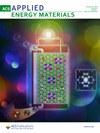Modelling the comparative influence of conjugation and transformation on plasmid spread in biofilms
Abstract
In this work, we propose a multidimensional continuum model for plasmid dissemination in biofilms via horizontal gene transfer. The model is formulated as a system of nonlocal partial differential equations derived from mass conservation laws and reaction kinetics principles. Biofilm is modelled as a homogeneous, viscous, incompressible fluid with a velocity given by Darcy’s law. The model considers plasmid-carrying cells as distinct volume fractions and their vertical and horizontal gene transfer via conjugation and natural transformation. The model encompasses local detoxification of biofilm due to plasmid-borne resistance gene and its effect at the community scale. The equations are solved numerically and simulations are performed to investigate how transformation and conjugation regulate the dynamics and the ecology of plasmid spread in both a multidimensional and one-dimensional biofilm system. Model results are able to predict relevant experimentally observed results in plasmid spread, such as the respective intensity of different horizontal gene transfer mechanisms and the importance of selective pressure. Moreover, model results predict coexistence of plasmid-carrying and plasmid-free bacteria even in conditions when one should out-compete the other, offering a simple modelling explanation on global plasmid persistence in bacterial communities.

 求助内容:
求助内容: 应助结果提醒方式:
应助结果提醒方式:


